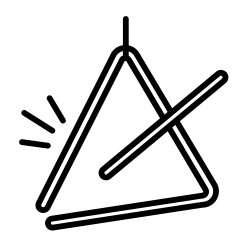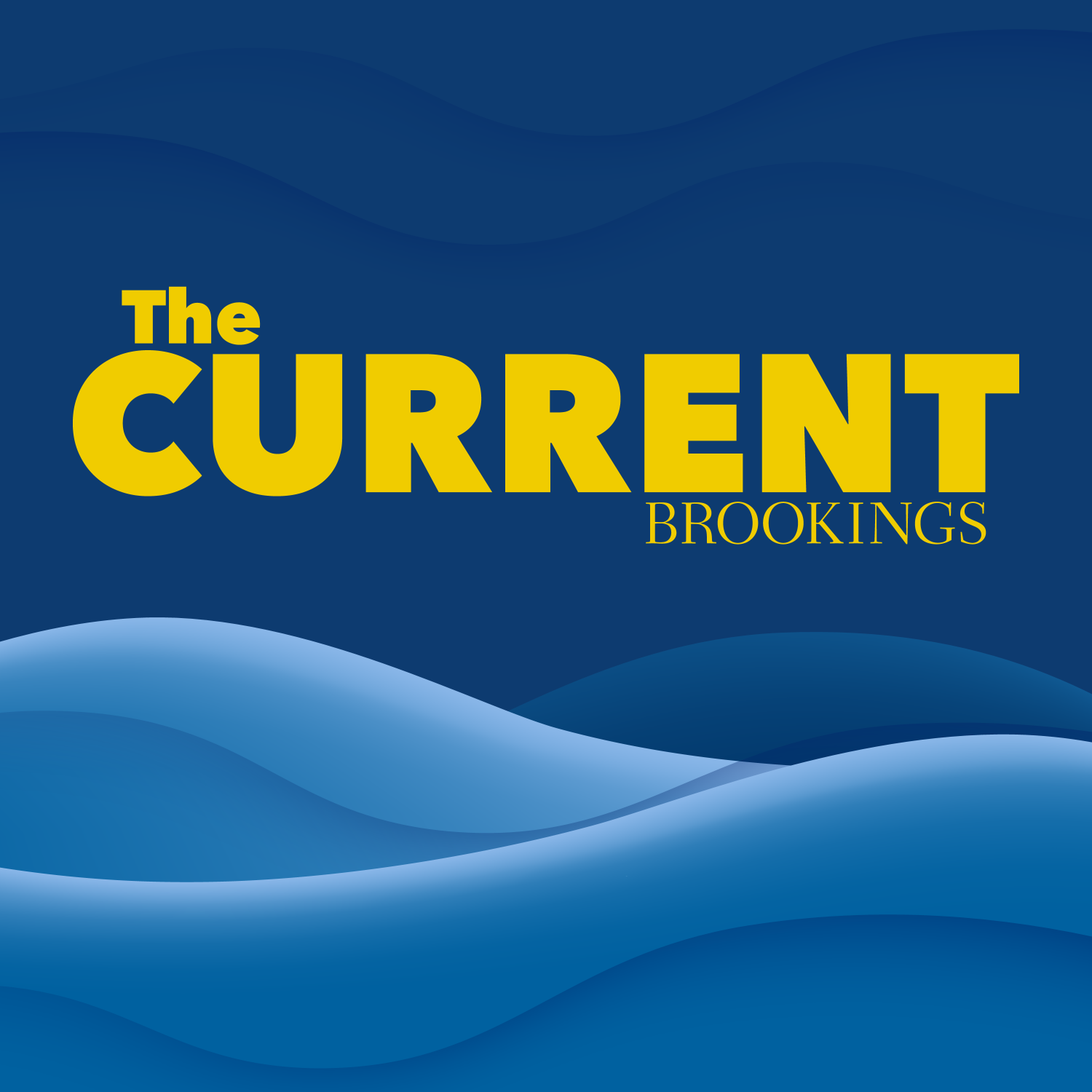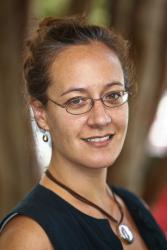Several new developments in the congressional investigation into the January 6 attack on the U.S. Capitol came to light this week. Quinta Jurecic explains the significance of the news, including the seven-hour gap in White House call logs, a district court judge’s opinion that President Trump “more likely than not” engaged in criminal acts, plus new investigations into the funders of the “Stop the Steal” rally.
Related material:
- Donald Trump, John Eastman, and the Silence of the Justice Department
- Why the January 6 Investigation Is Weirdly Static
- The January 6 Project
Thanks to audio engineer Gaston Reboredo and Fred Dews for their support.
TRANSCRIPT
PITA: The House of Representatives select committee’s investigation into the January 6 attack on the U.S. Capitol has been proceeding steadily since it convened last year, but since the first public hearings in July, has largely been doing its work behind closed doors.
This week has led to some news out of the committee, a lot of new disclosures, and new reporting from the Washington Post, as well as other outlets. So here to catch us up on the work of the committee is Quinta Jurecic, a fellow in Governance Studies here at Brookings and senior editor at Lawfare. Quinta, thanks for talking to us today.
JURECIC: Thanks for having me.
PITA: Before we get into the details of a lot of the news that came out this week, I want to ask you to start with sort of the bigger picture look at the pace of the committee’s work. You had written a piece back in December, about the “weirdly static” nature of the investigation’s work. Certainly something of this magnitude needs to be done in a painstakingly methodical nature. But in the same way, that that slow methodical nature is leading to some real public anxiety as to whether there is going to be serious accountability for the January 6 attack. Can I ask you for your views on the pace so far, and these dual pressures of the sense of running out of time and the public visibility, versus being very thorough in all of its work?
JURECIC: So, as you say, a few months ago I wrote in The Atlantic that the committee’s investigation seemed to be causing some frustration among journalists, members of the public, insofar as there hasn’t been a lot of public work product so far. The committee held one hearing in July 2021 just when it was ramping up with members of the Capitol police and DC Metropolitan Police department who were present that day during the Capitol insurrection. But since then, the bulk of its work has been behind closed doors. We’ve seen some contempt reports, for example, holding witnesses who refuse to appear in response to a subpoena in contempt of Congress. We’ve seen some legal filings. But they haven’t released any reports; they haven’t held any other hearings.
They have been promising that they will start holding hearings, although that timeline keeps getting pushed back: at first it was February, then it was March, now I think it’s April or May. And that I think is representative of the difficult situation that they find themselves in. They’re – as far as we know from reporting – they’re running down a number of different angles here. They’re looking at the funding behind the January six rally, they’re looking at President Trump’s involvement, they’re looking at any number of different threads.
And the thing that we have to remember here is that the clock is really ticking down. This is a committee that almost all of the members are Democrats. There are only two Republicans: Representative Liz Cheney, who is the ranking member and vice chair, and representative Adam Kinzinger, who have sort of been cast out of the Republican caucus for their participation on this committee. And given the likelihood that the Republican Party will probably take the House of Representatives in in the 2022 midterms, I think it’s fair to say that pretty much everyone is predicting that it would be immediately shut down at the beginning of the next Congress or repurposed in some way that prevents it from continuing its work.
So there’s really a hard stop here in January 2023. And if the committee wants to start holding hearings, they’ve said that they’re also thinking about releasing public reports or the interim reports on their findings as things go on, you would expect that they would need to start doing that pretty quickly, precisely because, you know, time is running down. And I could also imagine that the members who are sitting on this committee will want to be able to hold up their work to voters in the midterms and say, we’ve been conducting this investigation
So, it’s not clear what’s happening now. They’re clearly very hard at work; there’s a sort of a constant stream of reporting about what they’ve been up to. There’s a lot of reporting recently about calling in new witnesses, litigating to obtain new streams of information. So far, we haven’t seen the sort of public fruits of that yet. It will be interesting to see when they decide they kind of hit the critical mass, where it makes sense to begin to take those findings public.
PITA: All right, well getting into the some of the particulars from this week: this investigation, of course, is drawing lots of comparisons to Watergate, and this week there was a particular parallel. Whereas President Nixon had 18 minutes missing from his White House tapes, the White House call logs that were turned over to the committee earlier this year, new reporting has come out that there is a seven-hour gap on January 6, encompassing from the beginning of the attack until shortly before the Capitol was finally declared secure later that evening. Talk to us a little bit about how significant this is and what sort of avenues the committee might have to try and reconstruct the conversations that surely must have happened during that seven hours.
JURECIC: Right, I think the comparison between the Watergate tapes and the current gap is a very interesting one, because of course it was that gap on the Watergate tapes that Richard Nixon’s [secretary] Rose Mary Woods claimed she had erased by accident. That was one of the things that people at the time ended up thinking was most incriminating of Nixon, that showed that he was really trying to cover things up.
So, the situation here is that on the president’s schedule, on the records of his schedule, there is a seven hour and 37-minute gap on January 6 that shows that he had no calls that were recorded from 11:17 a.m. to about 7 p.m. That’s the period during which the insurrection was taking place. And what’s particularly notable is that we know he was placing calls during this period because they’ve been previously reported. We know, for example, that he placed a call to Senator Mike Lee at about 2:30 p.m. while the insurrection was taking place. Again, we also know that he spoke to House Minority Leader Kevin McCarthy, although we don’t know precisely when. And so that indicates that the president was having phone calls that were not recorded, that the fact of those calls was not being recorded by the White House, Which raises the question, you know, what other communications might have taken place that we don’t know about? Was this an intentional effort to cover things up?
President Trump’s former National Security Advisor John Bolton also commented recently that he had heard him discussing the use of burner phones, so meaning, a sort of a spare phone that you use for communications that you don’t want to be traceable, don’t want on the record in this context. And so this raises a lot of questions as well. As with the tapes, we don’t know what was happening during that period, but the fact of the absence, especially given that we know that Trump was having phone calls, raises a lot of questions.
I think that’s especially notable given that, when we think about Trump’s culpability for January 6, a lot of the questions that the January 6 committee has raised about potential criminal culpability on his part have to do with obstruction of an official proceeding, which is in that instance, the proceeding being Congress’ certification of the electoral vote. And now, the fact that there is this gap in the record, is perhaps consistent with the broader picture of a president who is seeking to block Congress from doing its work. I don’t want to go so far as saying that the gap in the record is criminal, but it does fit with this broader pattern of a president who likely obstructed justice, according to the Mueller report, then obstructed Congress from doing its work during the certification of the electoral vote, and may perhaps have been trying to block anyone, including Congress, from finding out about that later.
PITA: One of the other major pieces of news recently was a decision from the Federal District Court Judge David Carter handing down a ruling about certain documents that were being requested by the committee and he wrote in his opinion, quote, “that it is more likely than not that President Trump corruptly attempted to obstruct the joint session of Congress on January 6, 2021.” Can I ask you to explain some of the context of his ruling, and particularly because it was on something more of a narrow matter, how much weight his opinion might carry with the committee’s work?
JURECIC: The Carter ruling is a really incredible piece of writing, and I definitely encourage listeners to go and take a look at a write up of it by Brookings Senior Fellow Benjamin Wittes over at Lawfare where he’s the editor-in-chief, and he sort of goes through precisely why it’s such a striking and damning account of President Trump’s conduct on January 6. The ruling comes in context in litigation to get access to documents from John Eastman, who listeners may recall is a law professor who became a kind of an outside advisor to Trump in his efforts to overturn the election. He had come up with this scheme that would essentially involve blocking the certification of the electoral vote to certify Joe Biden’s victory, overturning that and handing the vote to Trump, to which many people, including staffers of Vice President Pence argued would be illegal and unconstitutional.
So the committee is trying to get these documents from Eastman to sort of see how he was involved, what legal advice he gave and so forth, and Eastman is litigating to block them on the reasoning that he is Trump’s counsel and that therefore these documents are privileged under attorney-client privilege. And so this ruling by Judge Carter is essentially a ruling that says, the vast majority of the documents can be handed over to the committee; the vast majority, if not all, on the grounds that some of them are not attorney-client privileged and on the grounds that some of them may be attorney-client privileged, but that privilege is overcome by what’s called the crime-fraud exception.
So the crime fraud exception essentially says that you can’t use attorney-client privilege as a way to get around criminal law. That if there’s evidence that, I’m your lawyer, but I’m also plotting with you to commit a crime, an investigator can still get access to those materials. And Judge Carter essentially says, you know what, I think that it is more likely than not that both President Trump and John Eastman committed two crimes: so one is obstruction of an official proceeding, meaning the official proceeding that was taking place in Congress that day of the certification of the electoral vote. And also a conspiracy to defraud the United States. He thinks that it is more likely than not that Trump and Eastman were engaged in that conduct, and therefore, that the committee can see these documents.
So as you say, that is, on one level it’s a very narrow ruling it’s saying that he thinks there is enough evidence to pierce the crime-fraud exception and allow the committee to see particular materials. On another level, though it’s very striking. “More likely than not” is a lot stronger than the judge needed to get in order to pierce the crime-fraud exception. And it’s quite a thing when a federal judge says that he thinks that the former president of the United States committed a felony offense. That’s a serious thing.
The ruling has raised a lot of questions about whether or not we might see some action from the Justice Department on this front. So far, I think that we’ve all been keeping a close eye on the department to see whether there might be some indication that they are directly investigating Trump himself for his role in the January 6 insurrection. Some analysts have identified what I think might be signs, but there hasn’t, I think, been any real loud and clear signal, yet, and so the question is, given that the federal judge now has this on the books will the Justice Department indicate that it’s in any stage of an investigation.
I think that’s really an open question; they’ve been pretty quiet so far. It’s, of course, not out of the question that Attorney General Merrick Garland wants to keep this out of the public eye while the investigation continues, but I do think that public pressure and criticism of the department for not being clear about the state of things, has certainly increased since Judge Carter’s ruling.
PITA: Thanks for that. Yeah, it’s really interesting that it’s so technical and yet could be very major. There’s been a bunch of other news this week, including disclosures of some messages from Ginni Thomas, the wife of Supreme Court Justice Clarence Thomas to the then-White House Chief of Staff Mark Meadows; former President Trump’s son-in-law Jared Kushner is expected to be interviewed by the committee this week. What other news has come forward that that you, as someone who’s watching this closely is really paying attention to and feels is significant?
JURECIC: The Ginni Thomas texts, I think, are significant because they’re an indication of sort of just how high up in the Republican Party in the conservative movement some of these conspiracy theories about election fraud went. If you read the texts that Thomas is sending to Meadows sort of pushing for him to overturn the election, she really seems to believe a lot of the sort of very out there conspiracy theories about election fraud. And I think that’s a reminder that you can’t really draw a clean divide between a sort of a Trump wing of the party or of the conservative movement that believe some of these more out-there ideas, and a more sort of respectable conservative movement that didn’t. That they’re really uncomfortably bound up in one another in a way that I think creates a lot of interesting problems for the January 6 Committee to work through. They’ve so far said that they’re going to ask Ginni Thomas to come in for a voluntary interview and have said that maybe they’ll have her subpoenaed if she doesn’t comply, so I think that’s definitely something to watch.
The other main thing is what’s been going on with the Justice Department. So as I mentioned, they’ve been facing a lot of pressure to sort of show that they’re investigating Trump himself. We learned on the evening of March 30 from the New York Times and the Washington Post that the department has expanded, seemingly, its investigation into what happened on January 6. We’d already known that the department was investigating the rioters who were physically present at the Capitol that day, and some of the people who were involved in organizing the more extremist groups that were fomenting that violence, so, for example, the Oath Keepers and the Proud Boys.
But according to the Times and the Post, they’re also investigating funders behind the Stop the Steal rally that Trump spoke at before the insurrection. And the Times also said that they’re investigating efforts by Trump supporters to create so-called fake slates of Trump electors that can be used as sort of alternative electors, rather than the Biden electors who had actually been selected in swing states that went for Biden, as well as other efforts to delay certification or overturn certification of the electoral vote.
That is very interesting. It suggests that the department may be kind of expanding its aperture, maybe not to Trump himself, but certainly little more broadly than just the people who were actually rioting at the Capitol or who were actually encouraging rioting at the Capitol from afar.
I think that’s very interesting. We’ll see where it goes. It’s early days, yet. Like I said, I think this reporting came out about 12 hours ago, so it’s hard to see what happens, but I think I will certainly be keeping an eye on whether the department’s investigation and the committee’s investigation, how they start to interrelate as the department seemingly is expanding into areas that the committee is investigating as well.
PITA: All right. There is so much going on here, I think I just want to ask you, before we close about whether we should take this the flurry of recent disclosures and new information as maybe a sign that that the investigation is entering into a new, maybe more accelerated phase, and sort of what we might expect over the next coming months?
JURECIC: You know, as with the Justice Department feeling pressure, I would imagine that the committee is feeling pressure as well just because, as I said, there’s really a ticking clock here and the time is running down. They have been routinely pushing back the date that hearings are supposed to start but they keep mentioning them; it’s clearly something they want to do. I would not be surprised if over the coming months we start seeing some more sort of public facing action from the committee as they start to really get their ideas, their findings out there in advance of the midterm elections.
PITA: Alright well, we’ll stay tuned, and Quinta, thank you so much for talking to us and explaining everything today.
JURECIC: Thanks for having me.
The Brookings Institution is committed to quality, independence, and impact.
We are supported by a diverse array of funders. In line with our values and policies, each Brookings publication represents the sole views of its author(s).







Commentary
PodcastWhat’s new in the January 6 investigation?
March 31, 2022
Listen on
The Current Podcast